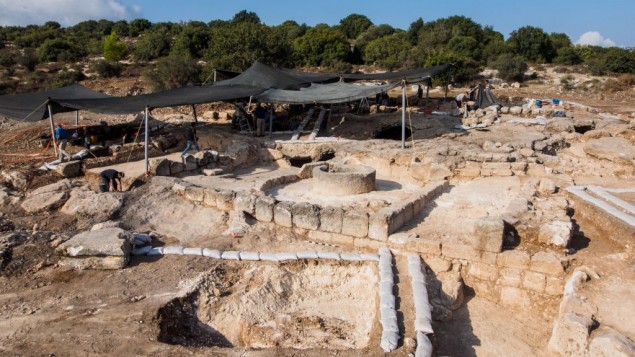Date£º
2014-09-23 11:24 Source£º
thedrinksbusiness Author:
Lauren Eads Translator:
Israeli archaeologists have uncovered an ¡°impressive compound¡± dating back nearly 2,000 years to the Byzantine period boasting an ¡°industrial-scale¡± wine and oil press.

Courtesy of the Israel Antiquities Authority
The remains unearthed in Ramat Bet Shemesh, 15 miles west of Jerusalem, were most likely to have formed part of a monastery, according to Irina Zilberbod, an archaeologist with the Israel Antiquities Authority (IAA).
The compound, demarcated by an outer wall, is divided into two halves which archaeologists believe marked an industrial and residential areas and dates back to the Byzantine age of the Roman Empire, which began in the year 313 BCE.
An ¡°unusually large¡± press in a rare state of preservation that was used to produce olive oil was exposed in the industrial area, along with a large winepress which consisted of two treading floors from which the grape must flowed to a large collecting vat.
Revealing its findings the IAA said it was likely the residents were engaged in wine and olive oil production for their livelihood with the ¡°impressive size¡± of the equipment indicating production was on an ¡°industrial-scale¡± rather than just domestic.
Zilberbod and Tehila libman, excavation directors speaking on behalf of the Israel Antiquities Authority, said: ¡°We believe this is the site of a monastery from the Byzantine period. It is true we did not find a church at the site or an inscription or any other unequivocal evidence of religious worship; nevertheless, the impressive construction, the dating to the Byzantine period, the magnificent mosaic floors, window and roof tile artifacts, as well as the agricultural-industrial installations inside the dwelling compound are all known to us from numerous other contemporary monasteries. Thus it is possible to reconstruct a scenario in which monks resided in a monastery that they established, made their living from the agricultural installations and dwelled in the rooms and carried out their religious activities.¡±
Archaeologists believe the compound changed hands around the start of the Islamic Period in the seventh century